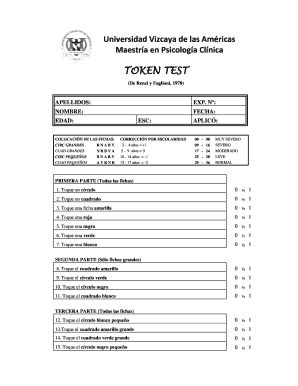Fired? Here's What to Know About Unemployment Paperwork

The world of work can be unpredictable, and it's not uncommon to find oneself unexpectedly out of a job. If you've recently been let go, navigating through the maze of unemployment benefits can seem overwhelming. Understanding the paperwork involved is crucial to ensure you receive the support you need during this transition period. This guide will walk you through the essential unemployment documentation, how to file for benefits, and what to expect during the process.
Understanding Unemployment Benefits

Before diving into the paperwork, it’s important to understand what unemployment benefits are:
- Unemployment insurance is a state-run program that provides temporary financial assistance to workers who have lost their job through no fault of their own.
- The benefits aim to replace a portion of your lost wages while you look for new employment.
- The amount and duration of benefits can vary by state, based on factors like your earnings history and the state’s unemployment rate.
Eligibility Criteria

To qualify for unemployment insurance, you must meet certain criteria:
- Earnings Requirement: You must have earned a minimum amount over the previous year or in a certain number of quarters.
- Reason for Unemployment: The termination must be due to reasons beyond your control, like layoffs or downsizing.
- Active Job Search: Most states require you to actively seek work while receiving benefits.
- Work Authorization: You need to be legally authorized to work in the US.
Navigating Unemployment Paperwork

The paperwork required for unemployment benefits can be intricate:
Application Form

- File the application with your state’s unemployment office either online or via mail. You’ll need to provide personal information, including your Social Security number, previous employment details, and the reason for your unemployment.
Documentation

- Proof of Employment: W-2 forms, paycheck stubs, or a letter from your former employer can serve as evidence of past employment.
- Reason for Separation: A letter or notice of separation from your employer detailing the reason for your job loss.
- Identity Verification: Documents like your driver’s license, passport, or Social Security card.
📌 Note: Ensure you have copies of all documents submitted, as you might need them for future reference or in case of appeals.
Weekly Certifications

- After your initial application, you’ll need to certify your eligibility weekly, detailing your job search activities, earnings, and any job offers you’ve received.
Key Steps to File for Unemployment Benefits

- Confirm Eligibility: Check if you meet your state’s requirements for unemployment benefits.
- Gather Necessary Documents: Collect all the necessary documents, as outlined above.
- Complete the Application: Fill out the unemployment application form with accurate details.
- Submit Online or by Mail: Choose the method that suits you best. Most states offer an online option for faster processing.
- Certify Eligibility Weekly: Continue to submit weekly or bi-weekly claims to receive ongoing benefits.
Common Issues and How to Address Them

Late Filing

- If you miss the deadline for filing your initial claim, you might not receive benefits for weeks you could have been eligible for.
- To avoid this, file your claim as soon as you’re notified of your job loss.
Benefit Denial

- Reasons for denial include voluntary resignation, misconduct, or not meeting wage requirements.
- You have the right to appeal the decision if you believe it’s incorrect. The appeal process can be time-consuming, so be prepared to wait.
🔔 Note: Always save and document all communications with your state's unemployment office, as this can help in case of disputes or appeals.
Maximizing Your Unemployment Benefits

While unemployment benefits can provide a safety net, here are some strategies to make the most of this time:
- Actively Seek Work: Keep a record of all your job search activities, including applications, networking events, and interviews.
- Upskill Yourself: Consider taking online courses or certifications to enhance your job prospects.
- Budget Wisely: Live frugally as benefits might not cover your full previous income.
- Know Your Rights: Be aware of any extensions or additional benefits available in your state.
In summary, navigating through unemployment benefits paperwork might seem complex, but with the right knowledge and preparation, you can streamline the process. Understanding the eligibility criteria, correctly filing your initial claim, and adhering to weekly certification requirements are key steps to receive and maintain your benefits. Remember, while this might be a challenging time, use the period to enhance your skills, broaden your network, and prepare for future job opportunities.
What if I disagree with the amount of benefits I’m receiving?

+
You can appeal the amount of your benefits if you believe there’s been a mistake. Contact your state’s unemployment office to inquire about the appeals process.
Can I still receive unemployment if I’ve been fired for misconduct?

+
Typically, no. Unemployment benefits are not available for those fired for misconduct or voluntary resignation, unless it’s shown to be for good cause or if you’ve won an appeal.
Do I have to report income from freelance work or part-time jobs while on unemployment?

+
Yes, you must report any earnings from work while receiving benefits. This might reduce or offset your weekly benefits, but you still need to report all income.



